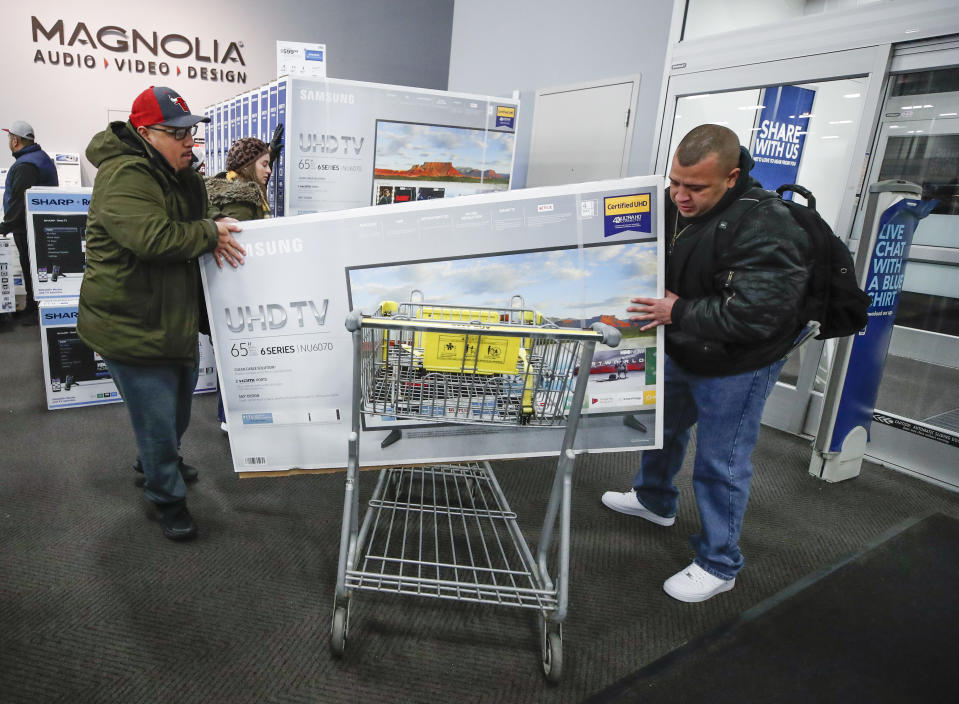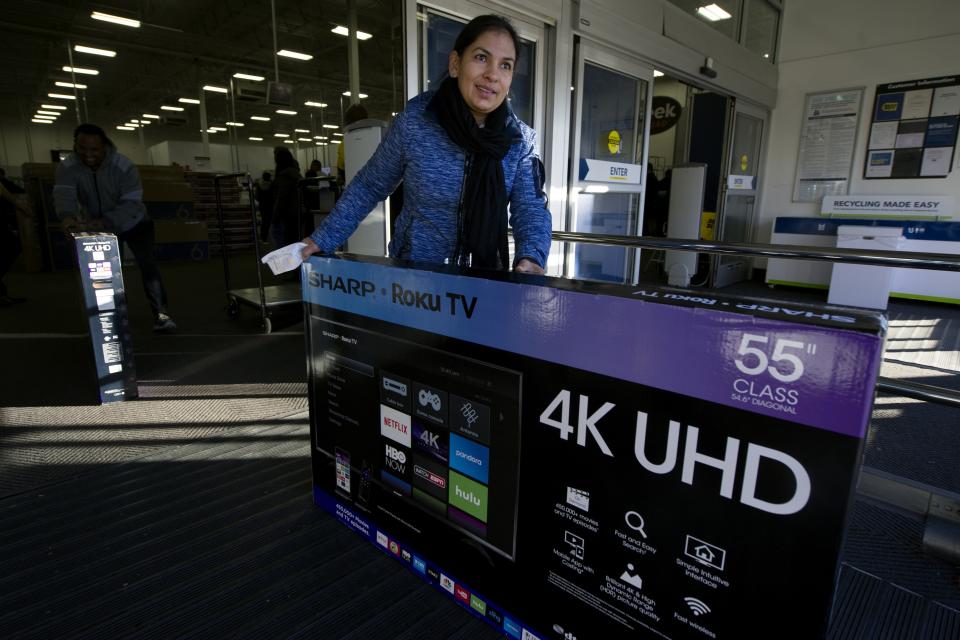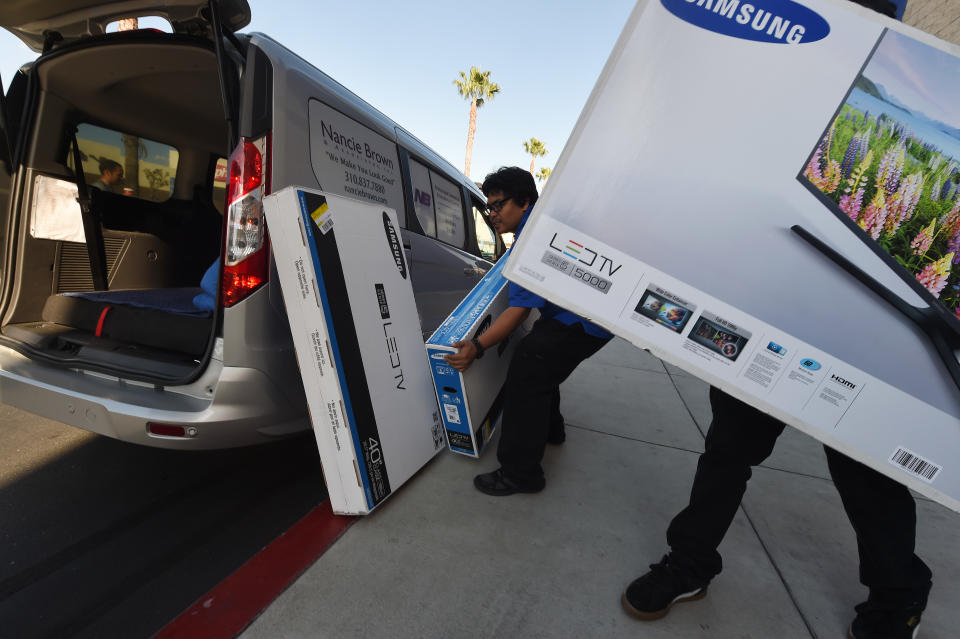How to shop for the perfect TV
Black Friday is fast approaching, and that means plenty of you out there are gearing up to buy one of the many TVs on sale. And while you'll find the best deals for a new set just ahead of the Super Bowl, you’ll still save on a TV around Black Friday if you know what you're looking for.
Because it turns out that shopping for a TV is a little more complicated than simply grabbing the set with the biggest screen that can fit in your home. You'll need to look at things like screen resolution, HDR, display type, backlighting, interface, and more. And since you'll likely have your TV for a number of years, you'll want to make sure you get the television that's right for you.

Luckily for you, I've got all the answers to your questions about how to shop for a new TV.
Get the right screen size for your home
4K only matters for TVs of 55 inches and larger
HDR makes a bigger difference than 4K
Full-array backlighting is best for LCD TVs
OLED screens are gorgeous, but pricey
Look for refresh rates of 60Hz and 120Hz
Screen size
If you're buying a new TV, the first thing you're going to want to figure out is the screen size you want. Get a TV that's too large, and it might not fit in your home. Get one that's too small, and you'll be squinting to make out what you're watching.
The farther away you sit from a TV, the larger the screen you'll want, and vice versa. Figure if you're sitting about 5 feet to 8 feet from your TV, it should be about 55 inches or larger. The most important thing to do is measure your wall, or the TV cabinet you're putting your TV in before you head to the store. Nothing is worse than getting home, unboxing that sweet new big-screen set, and then realizing it's too big for your one-bedroom apartment.
4K TVs
You’ve probably heard about this term ad nauseam, but here it is. 4K, also known as ultra-high definition or UHD, simply refers to a television with a resolution, the total number of pixels along its horizontal and vertical axes, of 3,840 pixels x 2,160 pixels. It’s only worth getting a 4K TV, though, if you’re purchasing a set with a screen that’s 55 inches or larger, since you’re unlikely to notice the difference between 4K and 1080p resolution screens at smaller sizes.

HDR TVs
HDR, or high-dynamic range, is a way for TVs to produce brighter colors and deeper blacks. They are able to do this thanks to intensely bright backlights that can generate a greater difference between the darkest and the brightest it can appear.
HDR also brings a wider color gamut, which means your TV is able to show a larger range of colors than standard sets. Between 4K and HDR, HDR easily offers the most noticeable improvement over older TVs.
Edge lighting and local dimming
LCD/ LED TVs use a number of methods to light up their pixels. There are edge lighting solutions that run strings of lights along the top and bottom or sides of a TV, and full-array lighting solutions that blanket the entire rear of the TV with individual lights.
There are positives and negatives for both. Edge lighting, which is less expensive than full array, pushes light from the top and bottom, or sides of a TV. It can cause blacks to look grey and murky rather than inky as they should appear. Companies try to offset this by using a technique called local dimming, which only lights up certain parts of the edge lights — but it isn't a perfect solution.
You’ll see this on your TV when you load Netflix (NFLX), for instance. If your set uses edge lighting on its top and bottom edges like mine does, the left and right sides of the screen will look black, while the Netflix logo will be noticeably brighter, adding depth to the image.
The problem is, edge lighting also lights up areas that are meant to be dark, due to light bleed. Take that Netflix logo, for example. While the sides of the screen will look dark, the areas close to the Netflix logo that are supposed to be black will end up looking grey and murky.
Companies try to fix this by lining the top, bottom, and sides of their TVs with LEDs rather than the top and bottom or just the sides. The better fix is for companies to use full-array lighting combined with local dimming, which better isolates light bleed. But it won't completely eliminate the issue.

OLED TVs
OLED TVs offer higher contrast ratios than even LCD/ LED HDR TVs, because rather than using lines edge lighting or full-array lighting setups, OLED panels are able to light up, and turn off, each individual pixel depending on what's being shown on the screen.
This prevents those weird washed out blacks you get with LCD/ LED panels. In fact, because pixels can be completely turned off, OLED TVs are able to produce pure blacks, which makes for some incredibly vibrant images. OLED panels, however, aren't able to get as bright as LCD/ LED screens, so they aren't always great for rooms with a ton of bright, natural light. They're also far more expensive than LCD/ LED TVs.
Refresh rate
The refresh rate of a television is how fast it produces an on-screen image. See, the motion of a television is just a trick of the eye as still frame after still frame appears on screen one after the other. You’ve probably seen TVs with fresh rates of 60Hz, or 60 frames per second, which means they change images 60 times each second. There are also 120Hz televisions, which can change images 120 times per second, creating smoother on-screen movement.
Some companies also advertise 240Hz refresh rates, but those aren’t true frame rates and usually use some kind of proprietary technology to make images appear to flow more smoothly. Even some TVs that advertise 120Hz rates are really just running at 60Hz.
You can normally tell if a refresh rate is real or not based on how it’s advertised. If you see a refresh rate advertised as "super clear," or "motion speed," or something along those lines, it’s probably not the true refresh rate.
It’s also important to point out that if you play games on your TV, your console likely only outputs at 30Hz to 60Hz, so you won’t really benefit from a 120Hz screen.
Now that you’re armed with the proper knowledge, go forth and buy the TV of your dreams.
More from Dan:
Qualcomm President: By 2020 'all major carriers will have 5G'
What the Disney+ ‘hack’ should teach you about your own security
Google Stadia review: The game streaming service works — but it’s missing key features
Got a tip? Email Daniel Howley at [email protected] or [email protected], and follow him on Twitter at @DanielHowley.
Follow Yahoo Finance on Twitter, Facebook, Instagram, Flipboard, SmartNews, LinkedIn,YouTube, and reddit.
